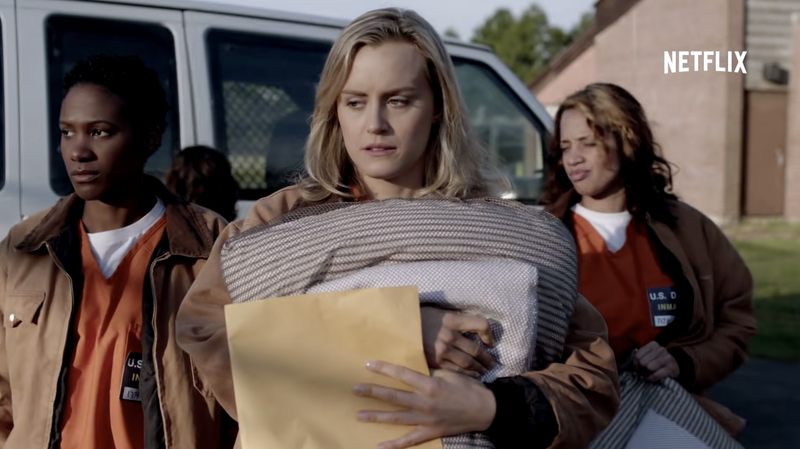Read This: The Orange Is The New Black cast was on the cutting edge of streaming disparity

- Oops!Something went wrong.Please try again later.
- Oops!Something went wrong.Please try again later.
- Oops!Something went wrong.Please try again later.
Orange Is The New Black
With the SAG-AFTRA strike all but assured, the issues within the entertainment industry are all the more glaring. A lot of those issues have to do with how the business changed in the streaming era; salaries are low, residuals are evaporating, and there’s a complete lack of transparency about viewership data. Perhaps no one knows this better than the writers and actors on Orange Is The New Black, one of the first mega-breakout hits of the streaming age. Several members of the supporting cast spoke with The New Yorker about their time on the show, and how the runaway success did not translate to financial security for most of its stars.
Perhaps most illustrative of how poorly the ensemble (which won three consecutive SAG awards for Outstanding Performance by an Ensemble in a Comedy Series) was compensated is the fact that many of them held down second jobs while acting on the show. Diane Guerrero (Maritza Ramos) tended bar; Emma Myles (Leanne Taylor) worked for a financial firm; Matt McGorry (John Bennett) and Lea DeLaria (Big Boo) have both talked about working other gigs.
Read more
Meanwhile, Netflix boss Ted Sarandos was bragging—in front of the underpaid cast—that OITNB had a bigger audience than Game Of Thrones. “I remember all of us thinking, ‘Give us the money!’ But we were always saying, ‘Give us the money,’” says DeLaria. “We were keenly aware that we weren’t being paid.” (Danielle Brooks, a.k.a. Taystee, has said she was paid less in the final season of OITNB than the kids on Stranger Things.)
Residuals, typically paid to writers and actors when a television show or movie is re-aired, are another huge sticking point for creatives. Myles, who appeared in 54 episodes of the Netflix series, gets about $20 a year in OITNB residuals, compared to around $600 a year for four episodes of Law & Order: Special Victims Unit. Lori Tan Chinn, who appeared on six seasons of the show, told TIME she considered going on food stamps the year the series ended.
“We all took a risk together,” Alysia Reiner (Natalie “Fig” Figueroa) explains to The New Yorker. “And the reward for Netflix does not seem in line with the reward for all of us who took that risk. I can go anywhere in the world and I’m recognized, and I’m so deeply grateful for that recognition. Many people say they’ve watched the series multiple times, and they quote me my lines. But was I paid in a commensurate way? I don’t think so.” Read the full piece here.
More from The A.V. Club
Sign up for The A.V. Club's Newsletter. For the latest news, Facebook, Twitter and Instagram.

